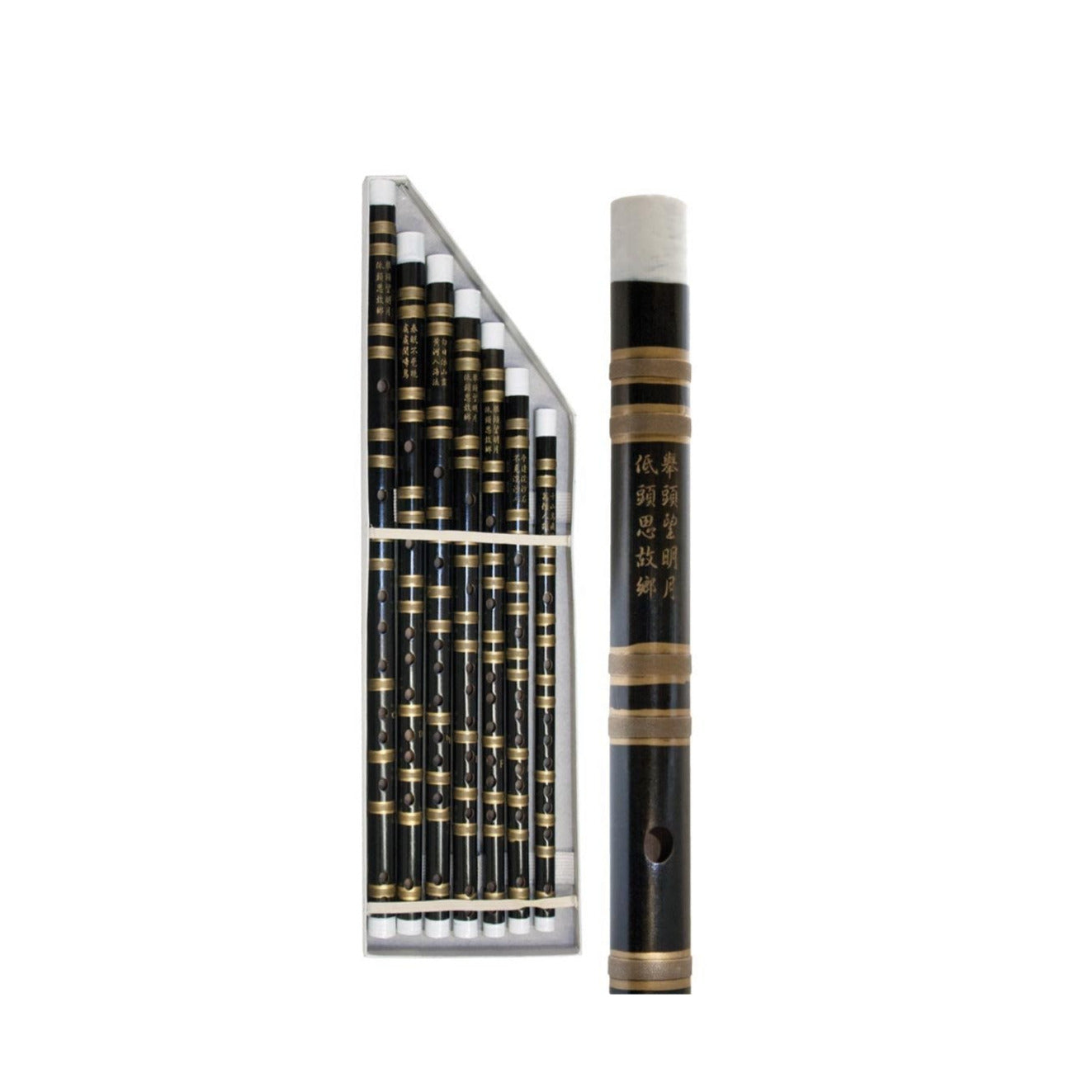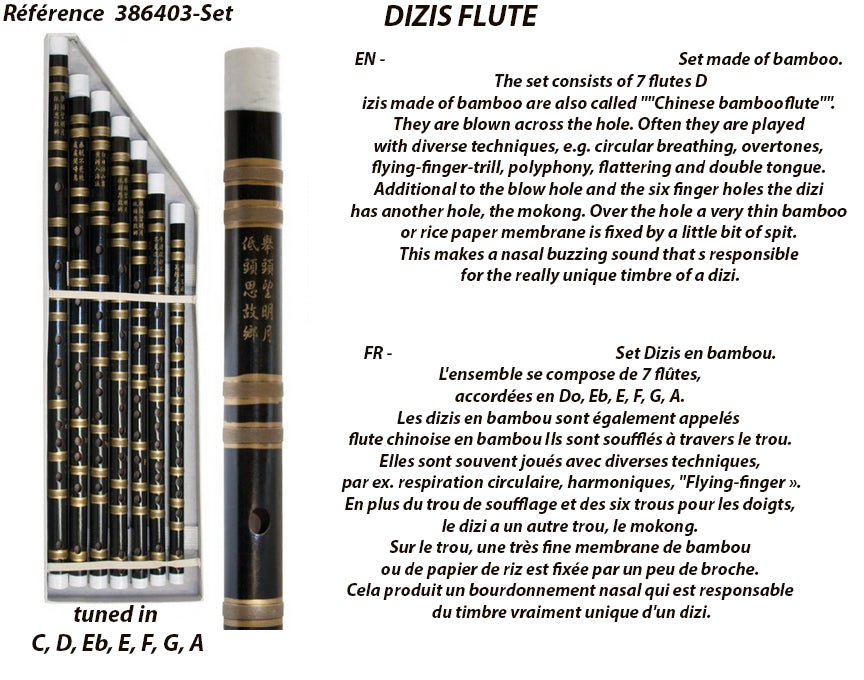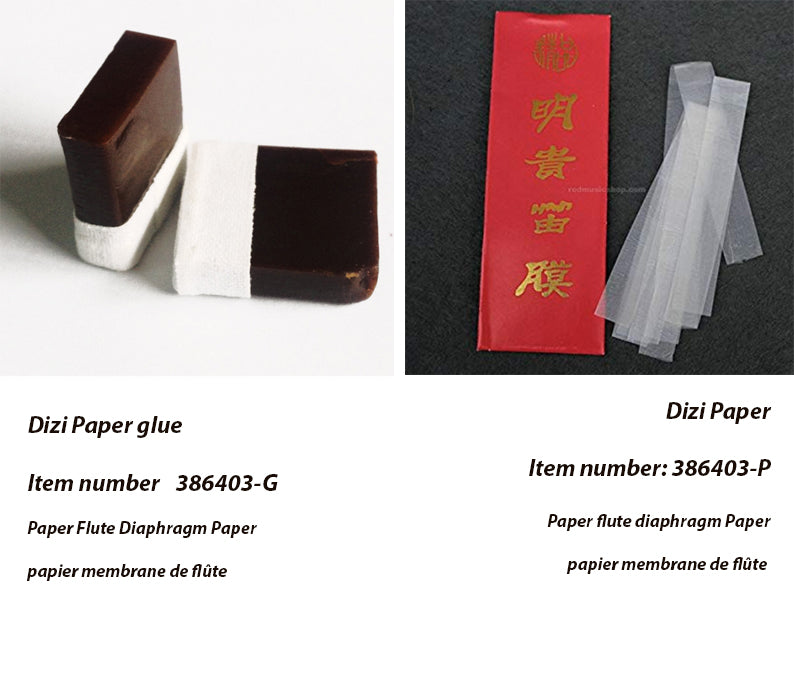Set of 7 'Dizis' flutes C, D, Eb, E, F, G, A. Traditional Chinese bamboo flutes. Often played with a variety of techniques!
Set of 7 'Dizis' flutes C, D, Eb, E, F, G, A. Traditional Chinese bamboo flutes. Often played with a variety of techniques!
Couldn't load pickup availability
About the product:
→ Set of 7 'Dizis' flutes tuned in C, D, Eb, E, F, G, A
🌍 Origin: China
📐 Dimensions: 61.5 centimeters x 3.2
🧬 Material: Wood.
🎶 Sound type: Traditional
📦 Packaging: In set only
🎁 Ideal for giving as a gift or treating yourself!
👉 Bamboo dizis are also known as "Chinese bamboo flutes." Often played with various advanced techniques, such as circular breathing, harmonics, flying finger trills, polyphony, fluttering, and double-talk.
In addition to the blow hole and the six finger holes, the Dizi also has another hole, the mokong.
A very thin, slightly crumpled bamboo or rice paper membrane is attached above with a small pin, which produces a nasal buzzing sound when played, giving the dizi its unique timbre.
📋 Fact sheet:
| Appearance | Details |
|---|
| Origin | China, traces of bone flutes (Jiahu, Henan) dated 7,000 to 9,000 years ago. |
| Historical appearance | Warring States Period (475-221 BC). |
| Apogee | Ming (1368-1644) and Qing (1644-1911) dynasties, very present in operas (Kunqu, Northern and Southern operas). |
| Modern era | 20th century: standardization, adaptation for modern orchestras (creation of chromatic xindi ). |
| Instrument type | Transverse (lateral) flute, woodwind, woodwind family. |
| Material | Mainly bamboo, sometimes with decorative tips (horn, ivory, plastic). |
| Dimensions | Variable: ~40 cm ( bangdi , high) to ~70 cm ( qudi , low). |
| Holes | 1 mouthpiece ( chui kong ), 1 membrane hole ( mo kong ), 6 playing holes, 1-2 resonance holes. |
| Membrane (dimo) | Thin film of reed/bamboo glued onto the mo kong , which gives the characteristic vibrant timbre. |
| Extent | About 2 octaves. |
| Tones | Different depending on the length (C, D, F, G…). Longer = lower. |
| Main types | Bangdi (short, high-pitched, piercing sound), Qudi (long, low-pitched, soft timbre), Xindi (modern, chromatic, without membrane). |
| Playing techniques | Vibrato, glissando, trills, ornamental effects ( flower of language ), micro-intervals by half-coverage. |
| Use | Chinese opera, traditional regional music, modern orchestras, soloist, fusions (jazz, world music). |
Share







